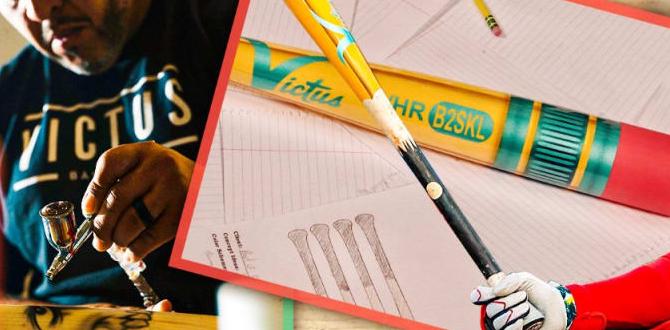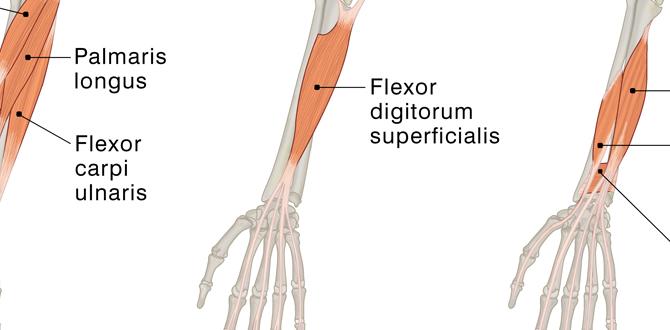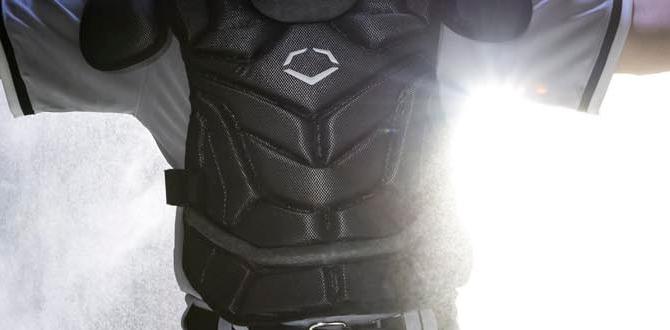Quick Summary: An EvoShield catcher’s throat guard is crucial safety gear that protects a vital area from foul balls and errant pitches, preventing serious injury and allowing catchers to focus on the game with confidence.
Evoshield Catcher’s Throat Guard: Shielding the Game’s Most Important Line of Defense
As a catcher, you’re the general on the field, calling the shots and making plays. But with that power comes great responsibility – and significant risk. One of the most vulnerable areas for any catcher is the throat, a spot where even a seemingly minor foul tip can have serious consequences. That’s where a reliable throat guard comes in, and today, we’re diving deep into why an EvoShield throat guard is an absolute essential for any catcher who wants to stay in the game, safe and sound.
We’ve all seen it happen – a ball zips past the mitt, or a wild pitch takes an unexpected bounce. In those split seconds, your throat is directly in harm’s way. It’s a common point of frustration for players and parents alike: how do you protect this delicate area without sacrificing comfort or mobility? Don’t worry, we’ve got you covered. This guide will walk you through everything you need to know about EvoShield catcher’s throat guards, from why they are so vital to how to choose and use them effectively. Get ready to learn how to keep that vital line of defense secure!
Why Every Catcher Needs a Throat Guard
Imagine this: you’re crouched low, laser-focused on the pitcher. The ball comes in, you make the catch, but then a foul tip rockets up. If you don’t have adequate protection, this could mean a trip to the dugout – or worse. A throat guard isn’t just another piece of equipment; it’s a critical safety feature designed to absorb impact and prevent severe injuries like fractured larynxes or severe bruising.
The throat area contains significant blood vessels and the windpipe. A direct hit here can be debilitating and even life-threatening. While masks offer protection for the face, they often leave a gap that a fast-moving ball can exploit. A well-designed throat guard bridges this gap, providing comprehensive coverage. It’s about minimizing risk so you can perform at your best without constantly worrying about getting hurt.
The EvoShield Difference: Innovation in Protection
EvoShield has built a reputation on creating innovative protective gear that doesn’t compromise on performance. Their approach to catcher’s gear, including throat guards, is no different. They focus on materials and designs that offer superior impact absorption while remaining lightweight and comfortable. This means you get top-tier protection without feeling weighed down or restricted in your movements behind the plate.
EvoShield understands that catchers need to be agile. Their throat guards are engineered to integrate seamlessly with a catcher’s mask and helmet, ensuring a snug fit that stays in place, no matter how many foul balls come your way. This commitment to advanced design makes EvoShield a go-to brand for players who demand the best in both safety and functionality.
Understanding Throat Guard Design and Features
When looking at catcher’s throat guards, you’ll notice a few key design elements that contribute to their effectiveness. EvoShield, in particular, excels in these areas. Understanding these features will help you make an informed decision about the best guard for your needs.
Materials Matter: Impact Absorption and Durability
The primary function of any throat guard is to absorb the shock of impact. EvoShield often utilizes multi-layer padding systems, combining various densities of foam and sometimes incorporating their signature custom-molding protective shells. These materials are designed to:
- Dissipate Force: Distribute the impact energy over a wider area, reducing the direct force on any single point.
- Absorb Shock: Cushion the blow, preventing it from transferring directly to the sensitive throat area.
- Withstand Repeated Hits: Be durable enough to protect you throughout an entire season of games and practices.
The outer shells, if present, are typically made from high-impact plastics or composite materials. These are designed to be rigid enough to block the ball but also have a slight flex to absorb and spread the energy. The inner padding is crucial for comfort and further shock absorption.
Fit and Attachment: Staying Secure Behind the Plate
A throat guard is only effective if it stays in place. EvoShield throat guards are designed for a secure and adjustable fit. Common attachment methods include:
- Strap Systems: Adjustable Velcro or buckle straps that loop around the jaw or back of the helmet, allowing for a customizable snugness.
- Clip-On Designs: Some guards feature clips that attach directly to the catcher’s mask cage, offering a simple and secure connection.
- Interchangeable Designs: Many EvoShield throat guards are designed to be easily attached to their own line of catcher’s helmets, ensuring a perfect, integrated fit.
The goal is a fit that feels secure without being constricting. You want to be able to breathe, swallow, and move your head freely. A well-fitted guard will sit snugly against your throat, providing a reliable barrier.
Ergonomics and Comfort: Playing Without Distractions
Beyond raw protection, comfort is key. A guard that feels cumbersome or digs into your skin will be a distraction. EvoShield pays attention to the ergonomic design of their gear:
- Contoured Shape: Guards are often shaped to follow the natural contours of the neck and jawline, minimizing pressure points.
- Breathable Materials: Inner padding might incorporate breathable fabrics to help manage moisture and heat.
- Lightweight Construction: EvoShield aims to keep their gear as light as possible without sacrificing protection.
Ultimately, you want a throat guard that you can forget is even there, allowing you to concentrate solely on the game.
Choosing the Right EvoShield Catcher’s Throat Guard
With various models and options available, picking the perfect EvoShield throat guard might seem daunting. But by considering a few key factors, you can narrow down your choices and find the one that best suits your needs.
Compatibility with Your Mask
This is paramount. Not all throat guards are universally compatible with all catcher’s masks. EvoShield designs many of their throat guards to work best with their own brand of catcher’s helmets and masks. Always check the product description to ensure it’s compatible with your specific mask model or brand.
Some guards are designed to clip onto the bars of a mask, while others use straps that wrap around the helmet or mask frame. If you have an EvoShield helmet, you’re likely to find a seamlessly integrated throat guard option. If you’re using a different brand, measure the distance between mask bars or note the attachment points to ensure a good fit.
Level of Play and Protection Needs
While all throat guards offer protection, some are built for higher levels of impact and durability. For younger players or those in recreational leagues, a standard foam-padded guard might suffice. However, for competitive players, or if you’ve experienced foul tips regularly, a guard with advanced padding or even a hard shell component offers superior protection.
EvoShield’s technologies, like their renowned custom-molding padding, are particularly beneficial for players seeking the highest caliber of impact resistance. Consider your personal experience and the general speed of play in your league when making this decision.
Personal Comfort and Fit Preferences
What feels comfortable to one player might not feel comfortable to another. Some players prefer a guard that is very streamlined and stays close to the neck, while others might appreciate slightly more padding. The length of the guard can also be a factor; some cover more of the throat than others.
If possible, try on different models. Pay attention to:
- Straps: Are they easy to adjust? Do they stay securely fastened?
- Padding: Is it soft against your skin? Does it feel protective?
- Coverage: Does it extend high enough to cover your Adam’s apple and low enough without interfering with your chest protector?
Reading reviews from other catchers can also provide valuable insights into the comfort and fit of specific models. For instance, a common piece of advice from experienced players is to ensure the guard doesn’t interfere with your ability to turn your head or look down at the ball.
How to Properly Fit and Attach Your EvoShield Throat Guard
Getting the fit right is crucial for both comfort and effectiveness. A poorly fitted throat guard can shift during play, leaving you exposed, or it can be so tight it restricts your breathing. EvoShield makes this process straightforward, but it’s always good to get it right from the start.
Step-by-Step Fitting Guide
Here’s a general guide on how to properly fit your EvoShield throat guard:
- Start with Your Gear On: Put on your catcher’s helmet and mask first. This ensures you’re fitting the throat guard in its intended position.
- Position the Guard: Place the throat guard against the front of your mask, aligning it with your chin and throat area. If it’s a clip-on style, attach it to the appropriate bars of the mask. If it uses straps, position it while you thread the straps.
- Adjust Straps for Snugness: Loop the adjustable straps around the back of your helmet or a designated attachment point on the mask. Tighten them gradually. You’re looking for a fit that is snug enough to stay put when you move your head up and down or side to side, but not so tight that it’s uncomfortable or restricts your breathing.
- Check for Gaps: Ensure there are no significant gaps between the guard and your mask, or between the guard and where your chest protector would sit. The guard should create a continuous protective line.
- Test Mobility: Move your head around naturally. Can you turn your head to see the outfield? Can you look down at the ball without the guard digging into your neck or shifting out of place? You should have a full range of motion.
- Final Adjustment: Make any slight adjustments to the straps for optimal comfort and security. A good fit means the guard stays centered and stable during all catching movements.
Common Mistakes to Avoid
* Over-tightening: This can restrict breathing and blood flow, leading to discomfort and reduced performance.
For specific instructions unique to your EvoShield model, always refer to the manufacturer’s guidelines. You can often find detailed fitting videos or diagrams on the EvoShield website, which is a great resource for understanding how to best utilize their products. Check out EvoShield’s support page for detailed product information.
Maintaining Your EvoShield Throat Guard for Longevity
Like all sports equipment, proper care will extend the life of your EvoShield throat guard and ensure it continues to provide optimal protection. It’s not complicated, but consistency is key.
Cleaning Your Throat Guard
The best way to clean your throat guard is usually with mild soap and cool water. Here’s a general approach:
- Wipe Down Exterior: Use a damp cloth with a bit of mild soap to wipe down the exterior of the guard. This will remove dirt, sweat, and grime from practice and games.
- Clean Padding: If the padding is removable, follow the manufacturer’s instructions. If not, use a lightly damp cloth to gently clean the padding. Avoid soaking the padding, as this can degrade the materials.
- Rinse (if necessary): If you used soap, gently wipe the guard again with a clean, damp cloth to remove any soap residue.
- Air Dry Completely: This is the most crucial step. Never put your throat guard in a dryer or expose it to direct heat, as this can warp or damage the protective materials. Hang it or lay it flat in a well-ventilated area to air dry completely. Ensure it’s fully dry before storing it or using it again.
Storage Tips
Proper storage prevents damage and keeps your gear ready for the next game:
- Cool, Dry Place: Store your throat guard in a cool, dry place, away from direct sunlight and extreme temperatures.
- Avoid Compression: Don’t store it under heavy equipment that could crush or deform it.
- Ventilation: Do not store it in a sealed plastic bag while damp, as this can lead to mold or mildew.
Inspecting for Damage
Regularly inspect your throat guard for any signs of wear and tear. Look for:
- Cracks or Deep Scratches: Especially on hard shell components.
- Torn or Worn Padding: Any damage to the internal padding can reduce its shock-absorbing capabilities.
- Stretched or Damaged Straps: Ensure Velcro is still sticky and straps are not frayed or torn.
If you notice significant damage, it’s time to consider replacing your throat guard to maintain your safety.
EvoShield Throat Guards vs. Alternatives: What Sets Them Apart?
The market offers various throat guard options, from basic foam inserts to more elaborate designs. EvoShield distinguishes itself through a combination of material science, design philosophy, and a focus on player performance.
While generic throat guards might offer basic protection, they can sometimes be less comfortable, less durable, or harder to fit securely. EvoShield’s approach typically involves:
- Engineered Padding: Utilizing advanced foam composites and sometimes proprietary shell technology for superior impact dispersion.
- Integrated Systems: Designing gear that works harmoniously with other EvoShield products, like their catcher’s helmets.
- Player-Centric Design: Focusing on comfort, mobility, and a secure fit that doesn’t hinder performance.
For example, some brands offer simple, one-size-fits-all foam pieces. These can be effective but might lack the adjustability and custom fit that EvoShield provides. Others might be bulkier or less breathable. EvoShield aims for a balance – providing robust protection without adding unnecessary weight or bulk, allowing catchers the freedom to move and react quickly.
When comparing, consider the cost relative to the technology and protection offered. EvoShield often sits at a premium price point, but this is reflective of the research and development that goes into ensuring a high level of safety and performance. Players often find that the durability and superior protection justify the investment, especially when protecting such a critical area. For official guidelines on sports equipment safety standards, you can consult resources from organizations like the National Federation of State High School Associations (NFHS), which sets many standards for youth baseball equipment.
Frequently Asked Questions About Catcher’s Throat Guards
Q1: Do I really need a throat guard if my mask has a good chin strap?
A: Yes, a throat guard is highly recommended. While a chin strap helps secure the mask, it doesn’t directly protect the throat from upward-moving foul tips or wild pitches that can slip through the gaps in a mask. A throat guard provides that essential layer of protection for a vulnerable area.
Q2: How tight should my throat guard be?
A: It should be snug enough to stay in place when you move your head, but not so tight that it restricts your breathing or feels uncomfortable. You should be able to turn your head and look down freely without the guard shifting or digging into your neck. Think secure, not constricting.
Q3: Can I use a throat guard with any catcher’s mask?
A: Most throat guards are designed for specific types of masks or brands. EvoShield guards are often optimized for EvoShield helmets. Always check the product description for compatibility. Some guards use universal clip systems, while others are strap-based and might offer broader compatibility, but it’s crucial to verify before purchasing.
Q4: How often should I replace my throat guard?
A: You should replace your throat guard if you notice any significant damage, such as cracks, tears in the padding, or worn-out straps. Even without visible damage, if the guard starts to feel less protective or has absorbed a significant impact, it’s wise to replace it as a precaution. For most players, checking its condition annually is a good practice.
Q5: Are EvoShield throat guards heavy?
A: EvoShield aims to create lightweight protective gear. While any added piece of equipment has some weight, their throat guards are designed to be as unobtrusive and light as possible, allowing for maximum mobility and comfort without sacrificing protection.
Q6: Can I wash my throat guard in a washing machine?





